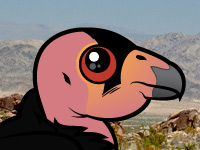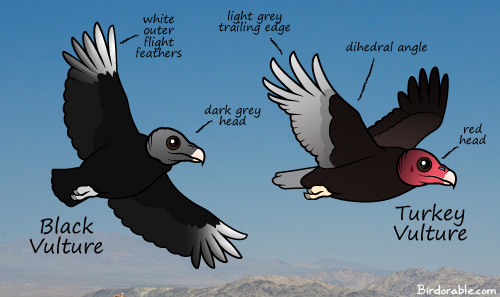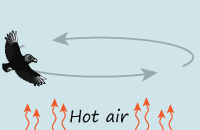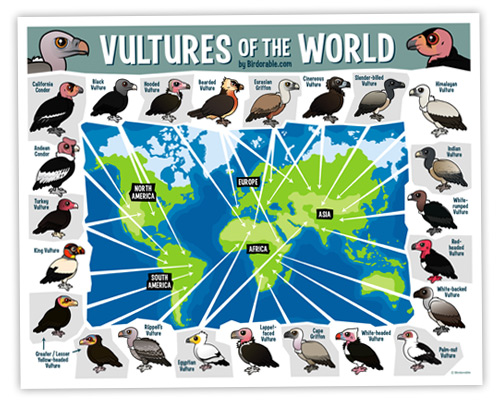Vulture FAQs on International Vulture Awareness Day
We're celebrating Vulture Week because today marks International Vulture Awareness Day! This commemorative day has been celebrated since at least 2009 and aims to highlight the importance of vultures and vulture conservation through education.
Why are vultures bald?
 When vultures feed on animal carcasses, they may poke their heads into some messy spots to pick out yummy bits to eat. Having a bald head means that they won't get dirty feathers at mealtime, saving them from picking up nasty bacteria and carrying it around in their heads. Vultures may also regulate their body temperature by adjusting the amount of bare skin that's exposed to the environment. Some vultures do have feathers on their heads, like the Lammergeier and Palm Nut Vulture. Carrion is not the main source of food for these species.
When vultures feed on animal carcasses, they may poke their heads into some messy spots to pick out yummy bits to eat. Having a bald head means that they won't get dirty feathers at mealtime, saving them from picking up nasty bacteria and carrying it around in their heads. Vultures may also regulate their body temperature by adjusting the amount of bare skin that's exposed to the environment. Some vultures do have feathers on their heads, like the Lammergeier and Palm Nut Vulture. Carrion is not the main source of food for these species.
How can I tell the difference between Black Vultures and Turkey Vultures?
Both of these New World vultures can be found throughout much of Central and South America. In North America, both Turkey and Black Vultures occur in the southeast. There are a few ways to tell the species apart. Black Vultures are smaller than Turkey Vultures. Turkey Vultures have red heads; the Black Vulture's head is very dark grey. While soaring, Turkey Vultures fly with their wings in a slight V-shape, known as a dihedral angle. The entire trailing edge of the Turkey Vulture's wing is light grey or white. In the Black Vulture, only the very outer flight feathers appear white.

Why are vultures endangered?
Vultures around the world are facing various threats. Yesterday we covered some of these threats in our blog post Threats Facing Vultures.
Are vultures and buzzards the same?
The short answer is no. Technically speaking, vultures and buzzards belong to very different families of birds. Vultures are large carrion-eating birds. Buzzards are buteos -- North America's Red-tailed Hawk (Buteo jamaicensis) and Europe's Common Buzzard (Buteo buteo) are both part of this family. North Americans call buteos "hawks", while the rest of the world may know this same family of birds as "buzzards". In North America, a common colloquial name for vulture is buzzard. Early settlers may have called all of the large birds they saw "buzzards" -- and this common name stuck to the vultures.
Why do vultures vomit?
New World species of vulture may vomit when they feel threatened. This serves two purposes. Vomiting empties the stomach and lightens the bird if it needs to make a quick get-away. Vulture vomit is also extremely foul, and the putrid puke may serve to repel or at least distract any potential predators or threats.
Why do vultures fly in circles?
 When you see vultures circling above, they are not loitering in the sky waiting for a potential prey item to die. Vultures do use thermals, or naturally occurring rising columns of hot air, to assist in soaring flight. In this way they are able to conserve energy as they search for carrion.
When you see vultures circling above, they are not loitering in the sky waiting for a potential prey item to die. Vultures do use thermals, or naturally occurring rising columns of hot air, to assist in soaring flight. In this way they are able to conserve energy as they search for carrion.
Where do vultures live?
New World vultures are found in the Americas, while Old World vultures inhabit parts of Europe, Africa, and Asia. Vultures are found on every continent except for Antarctica and Australia. We have this informative Vultures of the World map available for download or purchase.







Comments
Leave a comment
Thank you!